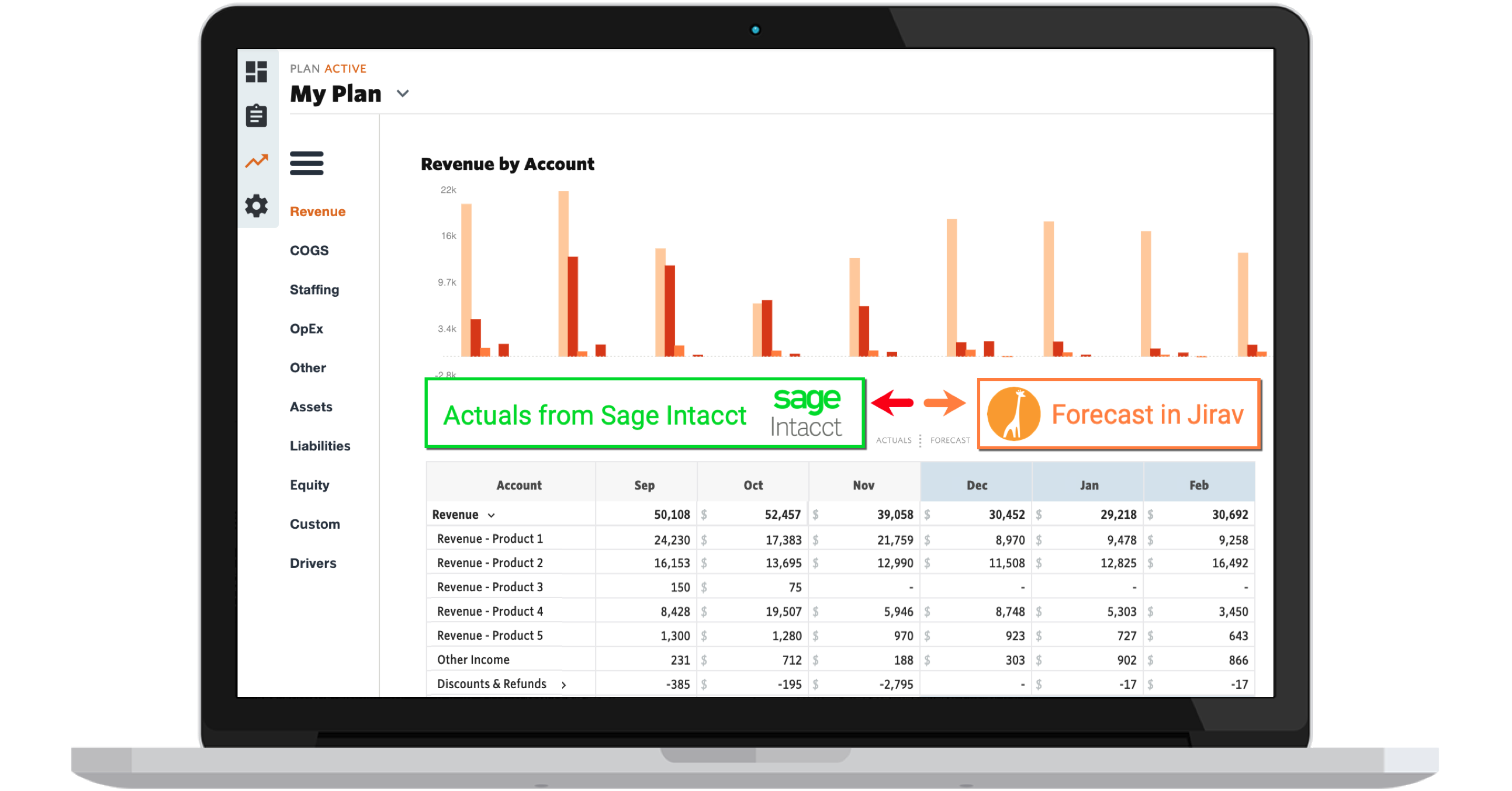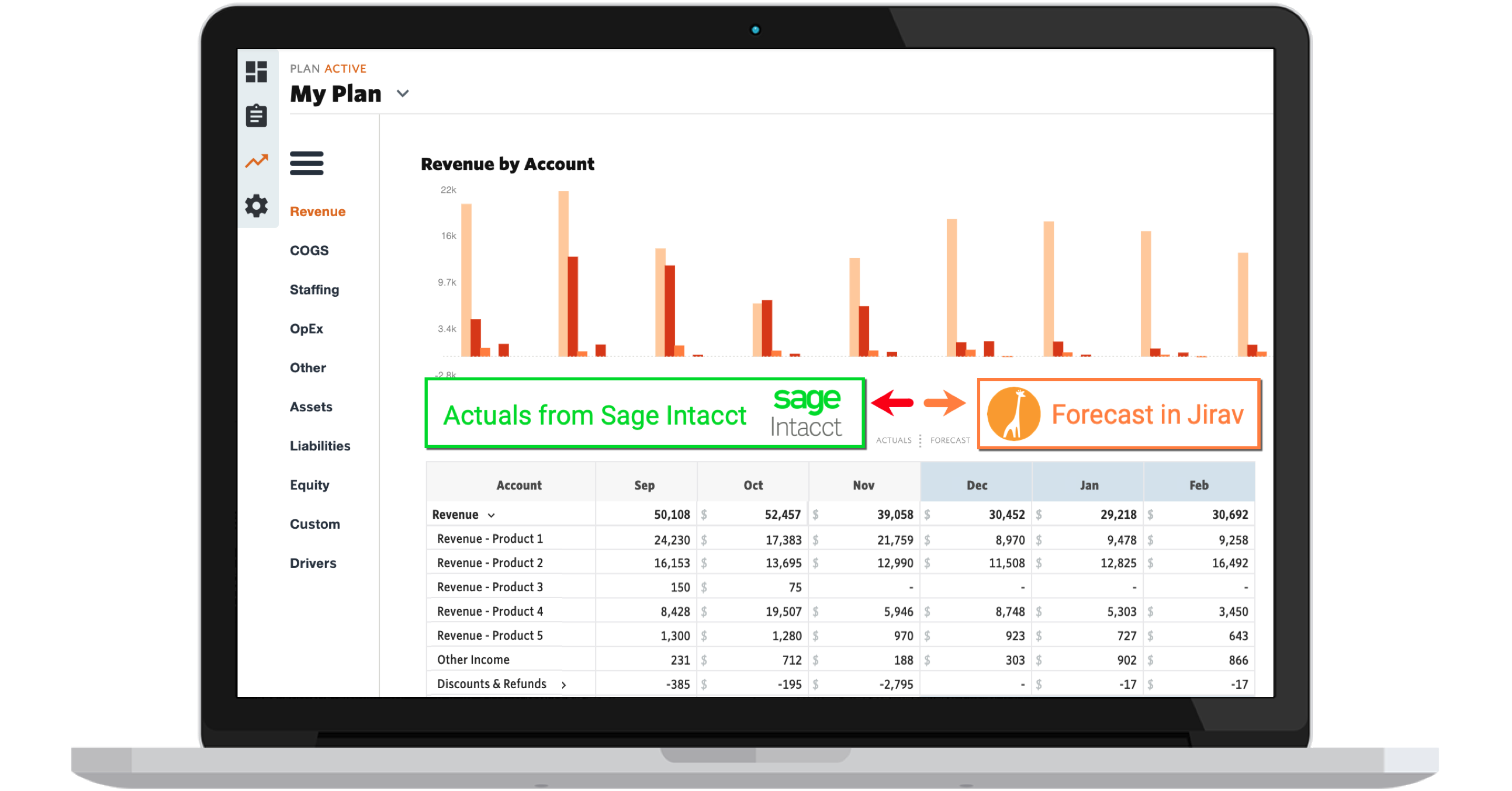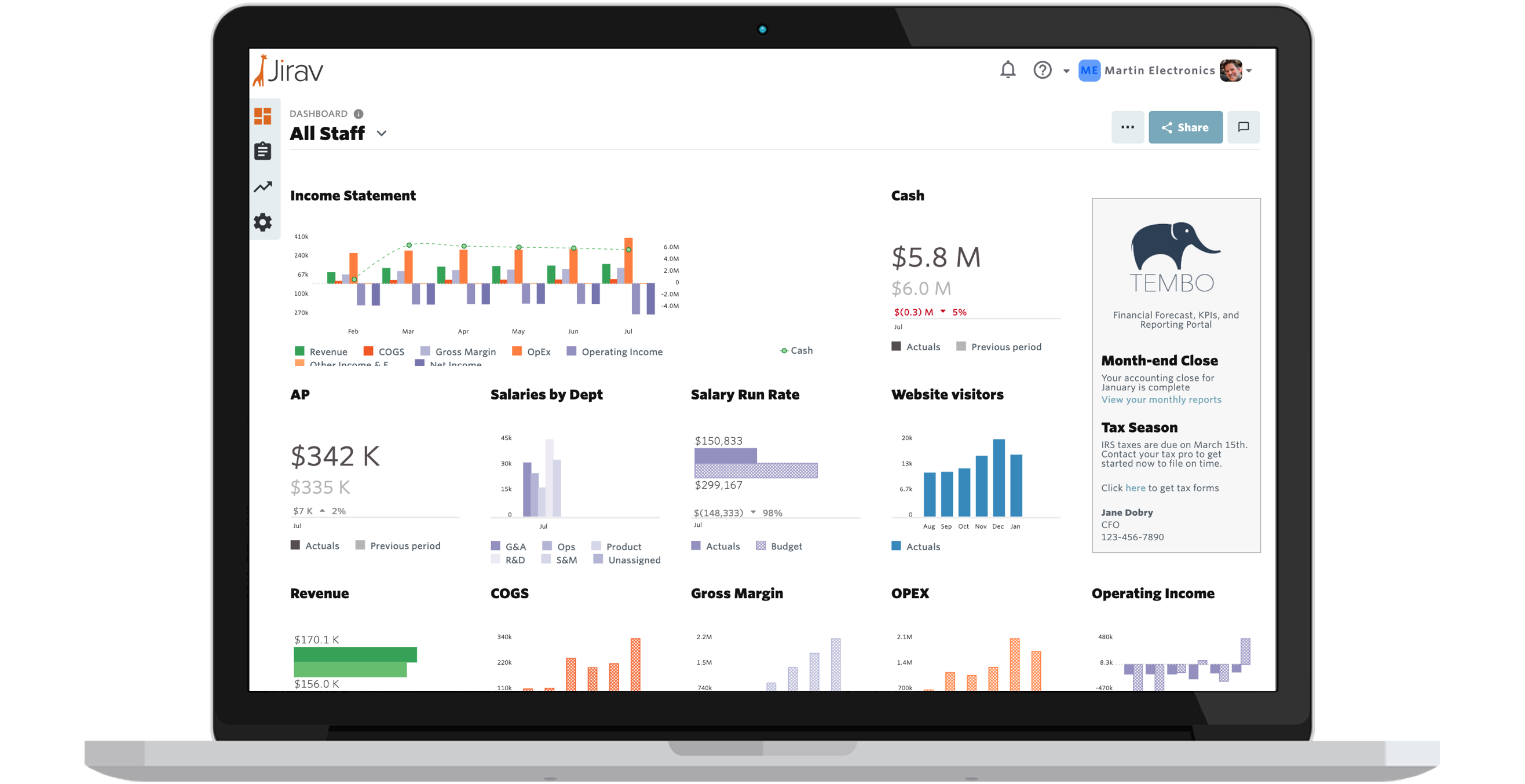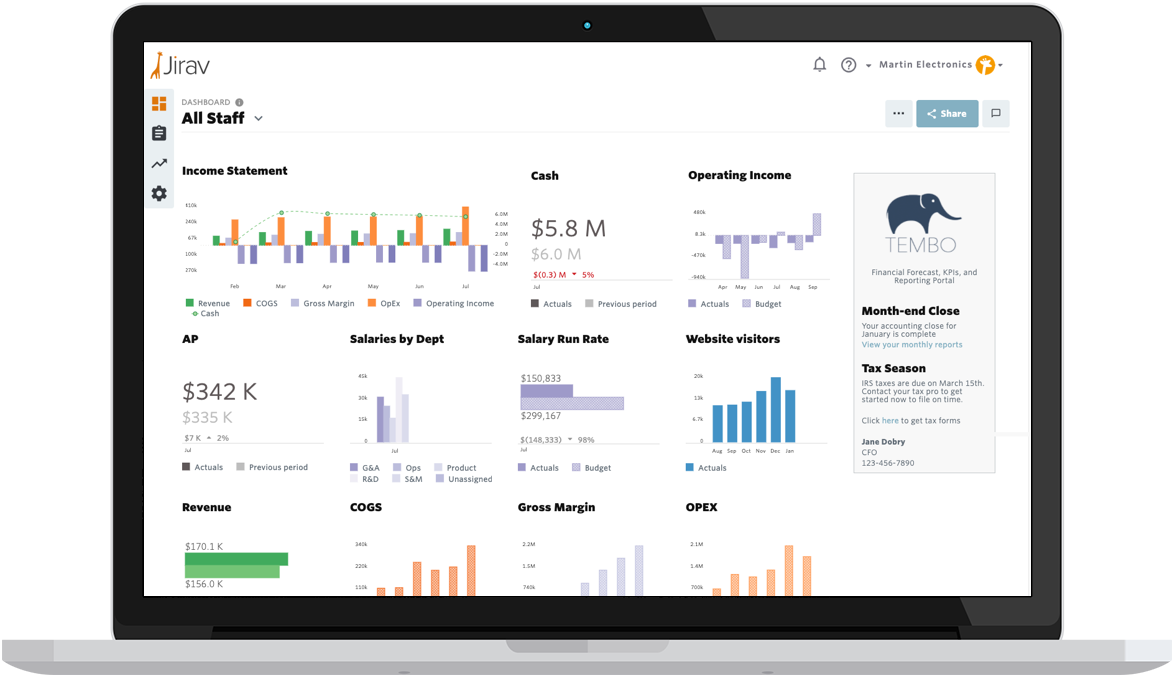Sage Intacct is accounting software for organizations who need a solution more comprehensive than Quickbooks. With real-time data, permissions to tailor the capabilities by role, drill down functions on individual reports and other next-level characteristics — it’s a very capable solution.
That said, Intacct’s reporting (while powerful) leaves something to be desired for many CFOs and controllers.
Bookkeepers and accountants need the numbers to show companies “what happened” in a preceding month/quarter/year. But finance leaders have additional responsibilities.
They must:
- Provide forecasts and models to project future performance
- Explain the state of the company, not simply the income and expenses
- Give advice to the executive team about best paths forward
To fulfill these responsibilities, CFOs and controllers need automated reporting across every aspect of the business — from payroll, inventory management, accounting and more. And Jirav is here to help.
Provide more than just historical reporting in record time
The level of data provided by Sage Intacct is superior to many comparable solutions in accounting. Individual reports are elegant and logical. But without a solution that allows you to compile the numbers from every facet of the business into a single report — you’re left to fill the gap.
Oftentimes, this means spending long hours building custom reports, then trying to explain them to your co-workers in long meetings and lengthy email chains.
But when you combine Intacct with Jirav, you can see the full picture and easily forecast using data from every corner of your enterprise. This powerful combination frees up your time so you can really dig into improving the financial performance of your business.
Let’s look at the three ways that Jirav supercharges Intacct:
- Automate your reporting to reduce manual spreadsheets
- Forecast and budget with more than accounting data
- Understand key performance indicators to meet goals
1. Automate your reporting to reduce manual spreadsheets
One Sage Intacct report shows incoming revenue and expenses. Another report gives you real-time inventory for multiple locations. And a third lets you drill down into the payroll numbers.
A CFO may be able to read these separate reports and get an understanding of the overall financial health of a company. However, some of your less financially savvy colleagues may lack the expertise or time to read multiple reports or seek out information from multiple locations. So it’s up to you to pull it all together in one clear report.
For example:
- Compensation figures from the payroll/HR system
- Sales and deal data from the CRM system
- Inventory data in a custom spreadsheet
Insights from combining these numbers can be crucial to the CFO and other decision makers in the organization. But to convey a holistic picture, you’ve got to explain it in ways that non-accountants can understand.
Jirav connects your custom spreadsheets, general ledger, payroll system, and more to easily compile all the financial and non-financial data you need into a visually-appealing monthly reporting package.
Each month, you can generate reports in seconds and simply share them with your colleagues online, or export to Excel or PDF. You can even share real-time dashboards so that everyone is looking at the same up-to-date information at the same time.
2. Forecast and budget with more than accounting data
In today’s lightning-fast economy, you need to share what the numbers from last quarter mean as well as predict what’s about to happen next quarter. This means budgeting and forecasting based on an array of financial and non-financial data. Accounting software allows you to see transactions, but it doesn’t include everything that leads to growth, especially leading indicators.
For that you need:
- Not just payroll numbers, but the cost to hire and train new employees
- The close rate of sales reps and the cost per acquisition of a new customer
- Understanding of outside factors (the current pandemic is an example of this)
Each one of these are “numbers” required to better predict and model future performance. Jirav pulls these data points easily and automatically into a comprehensive forecast.
3. Understand key performance indicators to meet goals
Of course, forecasts are rarely, if ever, 100% accurate. Instead, they provide a reasonable glimpse into the future using all of the best data available. From there, it’s up to the team to hit those projections.
If creating reports and communicating the financial health of the organization took less time, you would have the bandwidth to monitor key performance indicators (KPIs).
There is no shortage of suggested metrics to track. Business leaders don’t want to see the raw data. They need a clear line of sight into the factors that drive financial performance. For example, HR is interested in the number of employees because that’s what’s important to them. But the finance team needs to know:
- What’s the salary run rate?
- How much is net profit per employee?
- What’s the training cost and how long does it take for a new employee to become effective?
Monitoring KPIs also allows you to see glaring errors that otherwise may have been missed while trying to “get everything together” for the quarter.
It all comes down to better performance
Comprehensive reporting means everyone gets on the same page faster. Less time creating those reports means you have more time to offer sound projections while simultaneously keeping better tabs on key metrics.
Plus, you’ll have the right advice for the team to make better decisions. Insights such as:
- The forecast suggests we need two new reps within the next 30 days to get them trained and up to speed to meet our sales goals.
- It looks like we’re a bit heavy in the receiving department, so we may need to move someone or let them go.
- Our lease is about up and comps in this area are much lower. The numbers show that the benefit may outweigh the hassle of a move.
With Jirav, these solutions come faster, because it didn’t take you all night long to get everything on one page. Sage Intacct combined with the power of Jirav gives finance executives the freedom to know the numbers they need in a fraction of the time.














